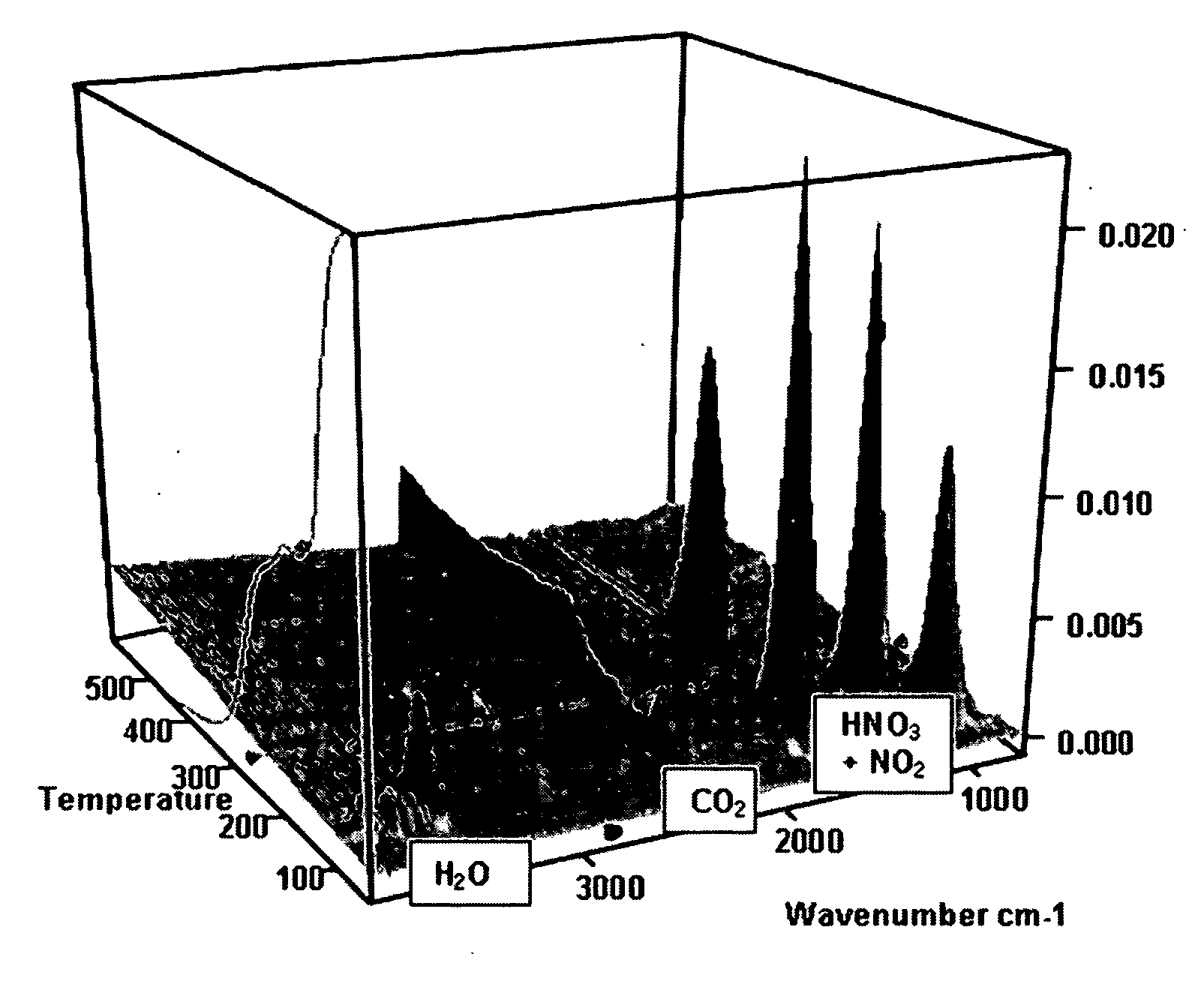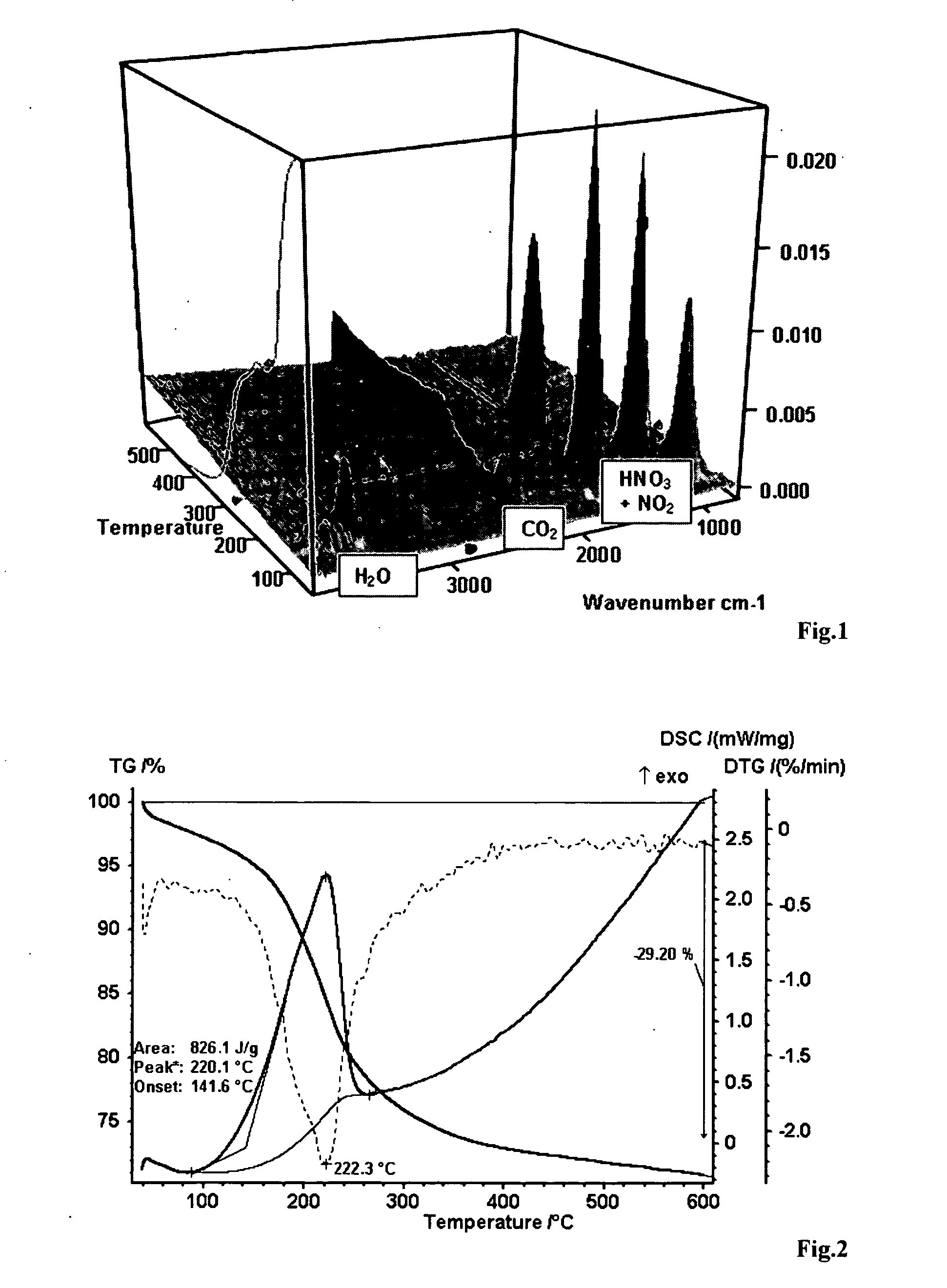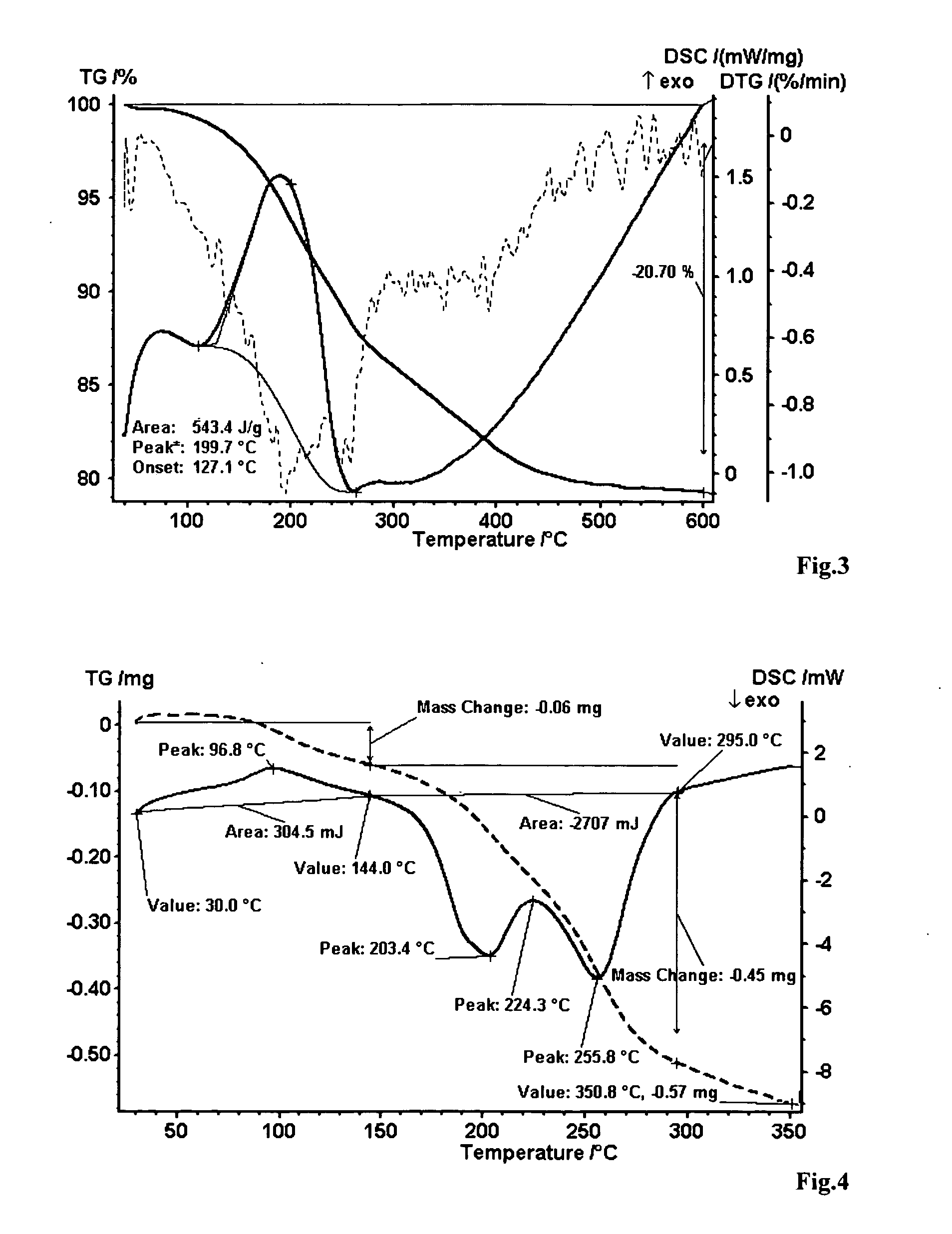Method for producing oxidised graphite
- Summary
- Abstract
- Description
- Claims
- Application Information
AI Technical Summary
Benefits of technology
Problems solved by technology
Method used
Image
Examples
example 1
[0058] An electrolytic cell comprising a reaction anode chamber between the anode lead and a movable piston with a diaphragm, and a cathode placed in electrolyte over the piston is loaded with 25 ml of 58% HNO3 and 10 g of natural graphite of the following particle sizes: 80% of 200-290 microns and 20% under 200 microns, and the graphite is subjected to anodic treatment in the potentiostatic mode. Potential Eb=2.1 V is applied at stage (b) (surface activation) for 15 seconds. Thereupon, stage (c) of electrochemical treatment is conducted to produce a GIC at potential Ec=1.75 V for 5 hours at Q=400 mA·hour / g of graphite. A pressure of 0.2 kg / cm2 is applied to the piston. The resultant product is then washed with water, dried, and subjected to heat treatment at 200° C., to give heat-expanded graphite having a bulk density of 1.7 g / liter.
examples 2-4
[0059] Anodic treatment is carried out in an acid at a concentration of 35% to 40% in two stages, with Q varying from 300 to 420 mA·hour / g of graphite and foaming temperatures of 200-250° C. The graphite thus treated has an average particle size of 200 microns.
[0060] Treatment conditions and results obtained in Examples 2-4 are shown in Table 1.
example 5
[0061] The reaction chamber of an electrolytic cell placed between the anode and cathode having a tightly fitting separator made from polypropylene fabric is loaded with 2 kg of a mixture of graphite and 80% sulfuric acid at a ratio of 1:1.6.
[0062] The graphite suspension is subjected to anodic treatment in the galvanostatic mode. Stage (b) (surface activation) is carried out at a current of 160 mA / g of graphite as the anode potential reaches a value of Eb=2.3 V (for about 2 hours), and then, as the current is reduced to about 80 mA / g of graphite, stage (c) (formation of GIC) is carried out. Electrolytic cell voltage varies within 3.5 to 4.5 V during the synthesis. The total treatment time is 9 hours, Q=450 mA·hour / g of graphite. The pressure on the piston is 0.2 kg / cm2.
[0063] The resultant product is then washed with water, dried, and heat-treated at 250° C. to give graphite having a bulk density of about 1.6 g / liter.
PUM
| Property | Measurement | Unit |
|---|---|---|
| Temperature | aaaaa | aaaaa |
| Temperature | aaaaa | aaaaa |
| Temperature | aaaaa | aaaaa |
Abstract
Description
Claims
Application Information
 Login to View More
Login to View More - R&D
- Intellectual Property
- Life Sciences
- Materials
- Tech Scout
- Unparalleled Data Quality
- Higher Quality Content
- 60% Fewer Hallucinations
Browse by: Latest US Patents, China's latest patents, Technical Efficacy Thesaurus, Application Domain, Technology Topic, Popular Technical Reports.
© 2025 PatSnap. All rights reserved.Legal|Privacy policy|Modern Slavery Act Transparency Statement|Sitemap|About US| Contact US: help@patsnap.com



